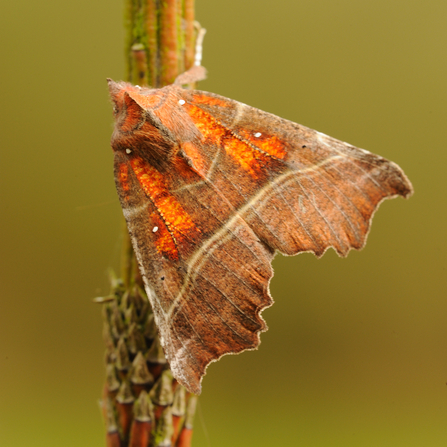Winter Moth
The Winter moth is a broad, pale brown moth and is one of the few species that can be seen on the wing in winter. They fly at night and are attracted to lights, you will often see them fluttering in the light beams from car headlights, though you can also find almost anywhere, resting on tree trunks, in shrubs or on the outside of your window.
The female winter moth is dark grey, has stubby wings and cannot fly, instead they clamber up tree trunks and give off pheromones to attract flying males. Their eggs are laid on the bark and don’t hatch until spring, when the tiny green caterpillars emerge. You might see them hanging down from trees on long threads of silk, this allows them to drift from one tree to the next.
Males are broad with a rounded, almost triangular shape. They're pale brown or greyish, with a darker band across the centre of the forewing.

